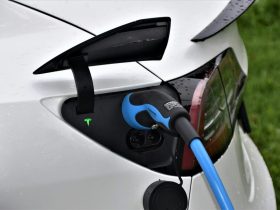Buying a camera can be challenging, especially if it’s your first time investing in one. Choosing from a variety of cameras can be difficult especially if there are various devices present, including a digital single-lens reflex (DSLR) camera.
Cameras in the market today carry several features like megapixels, lenses, viewfinder, and mirrorless technology, to name a few.
Here are some essential factors to keep in mind when choosing your first camera if you want to make the process as simple and stress-free as possible.
1. Price
All cameras on the market will come at a price. Most can be considered an investment due to the high price range, especially the high-end models. With this in mind, the best place to start is by creating a budget.
When deciding on the budget, a good approach is to develop a narrow price window. It’s best to aim for a specific range to make the options you find more manageable. If you have the financial means, you should look through the DSLR camera price range to ensure a successful start to your hobby.
While mulling over your budget, don’t forget to consider other accessories you might need. Spending too much money on a camera body with no lens isn’t advisable. Depending on your photography style, you should include a tripod, extra batteries, an external flash, and memory cards.
2. Camera Types

Once you have determined your budget range, you need to decide on the type of camera you need. Today, there are four major types of cameras to choose from such as bridge cameras, point-and-shoot cameras, DSLRs, and mirrorless cameras.
- Point-and-shoot cameras are suitable for beginners due to their compact and convenient nature, with automatic modes. Unfortunately, they have built-in lenses that can’t be interchanged and only have a limited zoom capacity.
- Bridge cameras have the same point-and-shoot concept along with non-interchangeable lenses. Improved control, ergonomics, and a larger grip are all advantages.
- DSLRs with multiple buttons and large lenses have long been the preferred choice. Lower-end models have great image quality and control, while higher-end models have more advanced features like autofocus tracking, continuous shooting, and so on.
- Mirrorless cameras have the same features as DSLRs but in a smaller, more compact package. The model strikes the perfect balance between quality and versatility.
3. Sensors
Sensors differ in terms of size, resolution, and high-ISO capability.
When you have a big sensor, you have better image quality. The big sensors can fetch a high price and are usually preferred by professionals. The largest sensors are full-frame, but most cameras on the market have smaller sensors called cropped or Advanced Photo System type-C (APS-C). There are also Four Thirds sensors, which are usually sufficient for taking clean images.
A high-megapixel camera is a trend nowadays that delivers detailed prints. Resolution or megapixels can be a consideration, but going for the high end has its share of drawbacks such as the photo file size. Images with high resolution can quickly fill up your memory card and computer hard drive because of their big file size.
When it comes to the ISO capabilities or a camera’s sensitivity to light, a good start is to check out hands-on reviews to know more about a model’s high-ISO capabilities.
4. Ergonomics
The camera’s ergonomics can be a consideration if comfort is your priority. During the selection process, make sure you hold the camera to know how it feels in your hands and try to capture a few shots to see how it’ll go.
5. Lens Quality
The camera sensor will perform optimally if its lens is also high quality. Even if you have the best sensor, if your lens is blurry, the product photos will be blurry.
You need to decide on the zoom you need. Some lenses today can cover vast distances and handle various types of photography. Other lenses feature limited zoom ranges.
Most DSLRs and mirrorless cameras usually include one lens. Luckily, you’ll have a vast array of options for lenses, depending on your needs. Further, many cameras come and are sold as kits which include the camera body and lens.
6. Durability
Some cameras are made to last, while others will require special care for them to be usable for the years to come. If you’re planning to take photos indoors, the durability factor might not be a priority. Yet if you plan on capturing the outdoors, consider a highly durable model that can endure the elements better. Check and test features like water durability and others.
Final Thoughts
Investing in your first camera can be a challenging task due to the abundance of choices on the market these days. When purchasing one, you shouldn’t rush to get it right. As a beginner, you’ll use your camera to take photos, so choosing an entry-level device by considering the essentials will make it easier for you to transition to more complex equipment later in the future.
With the help of the valuable insights mentioned above, they’ll serve as your guide during the selection process to find the right model for your specific needs.







Leave a Reply